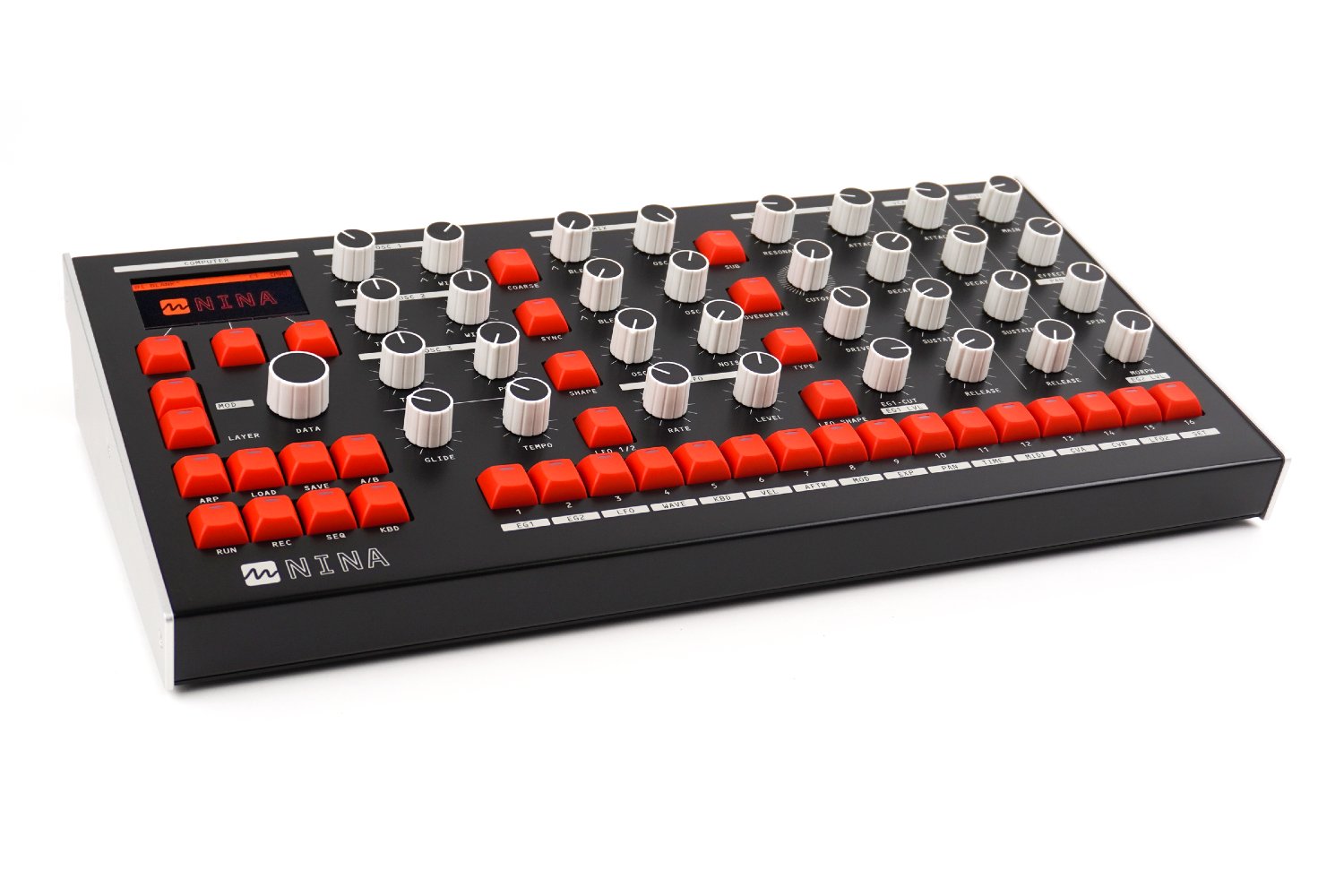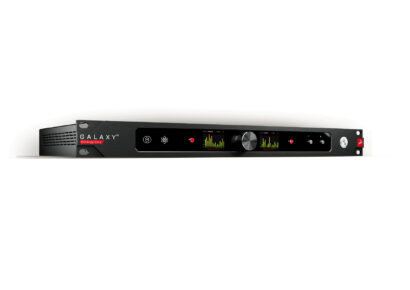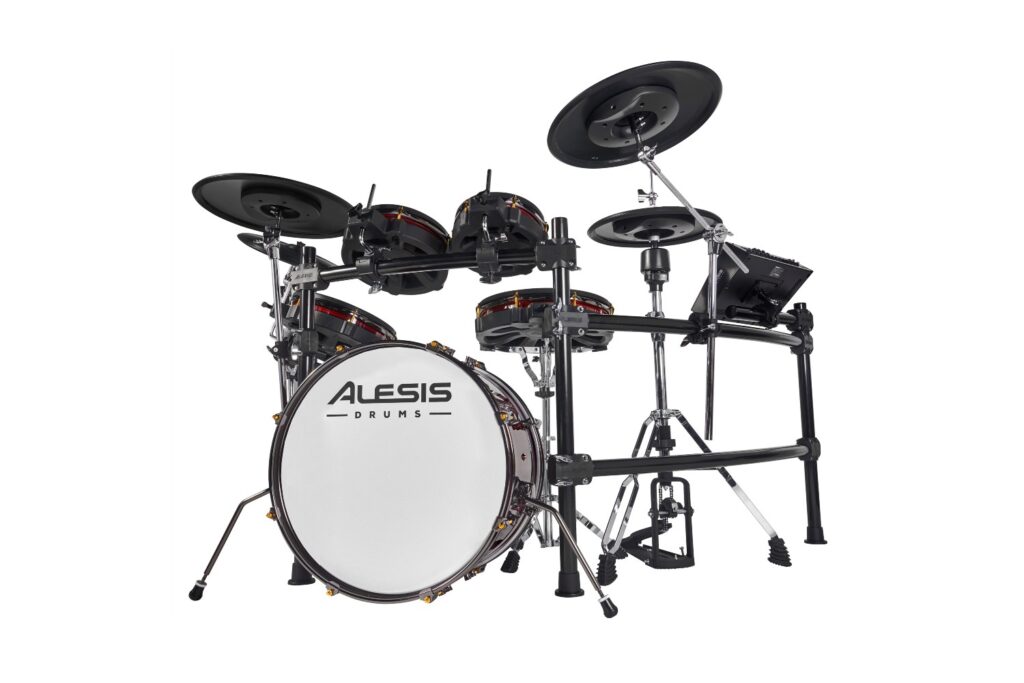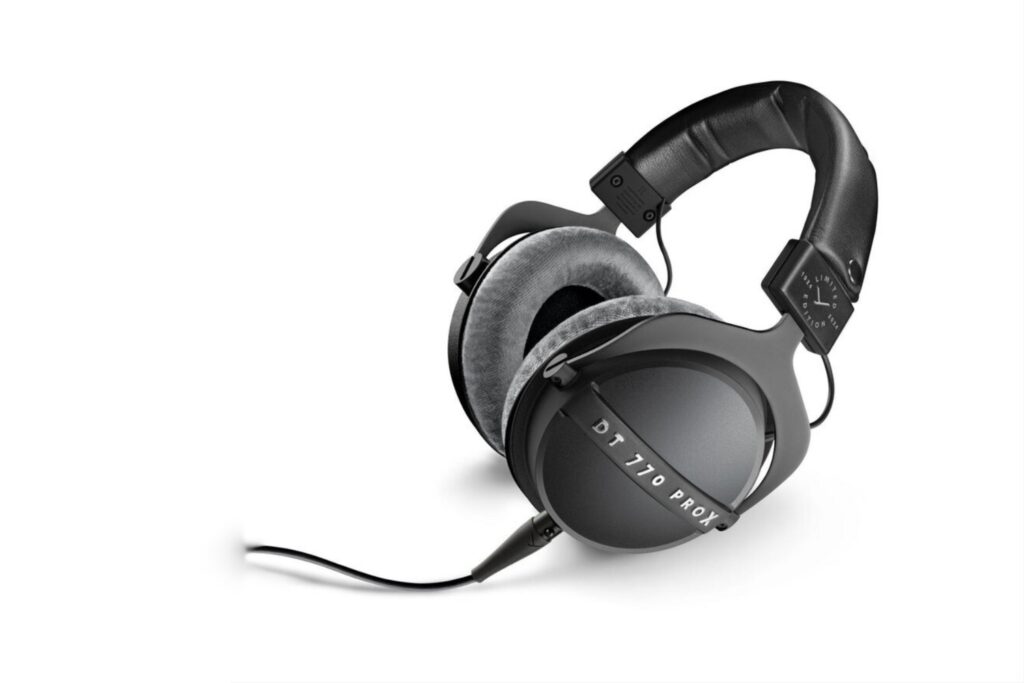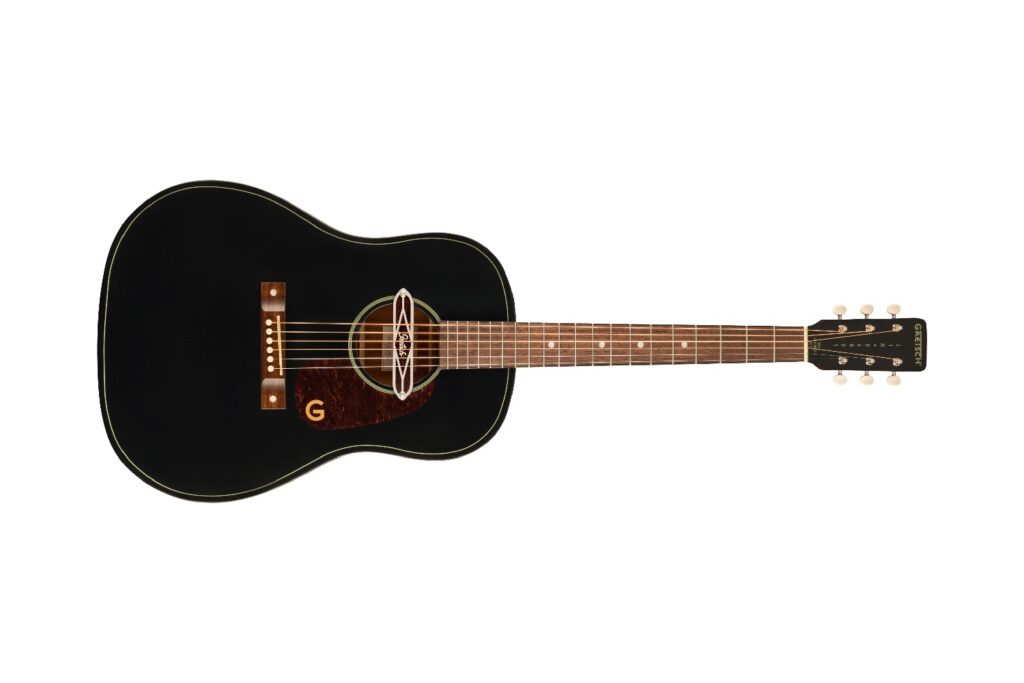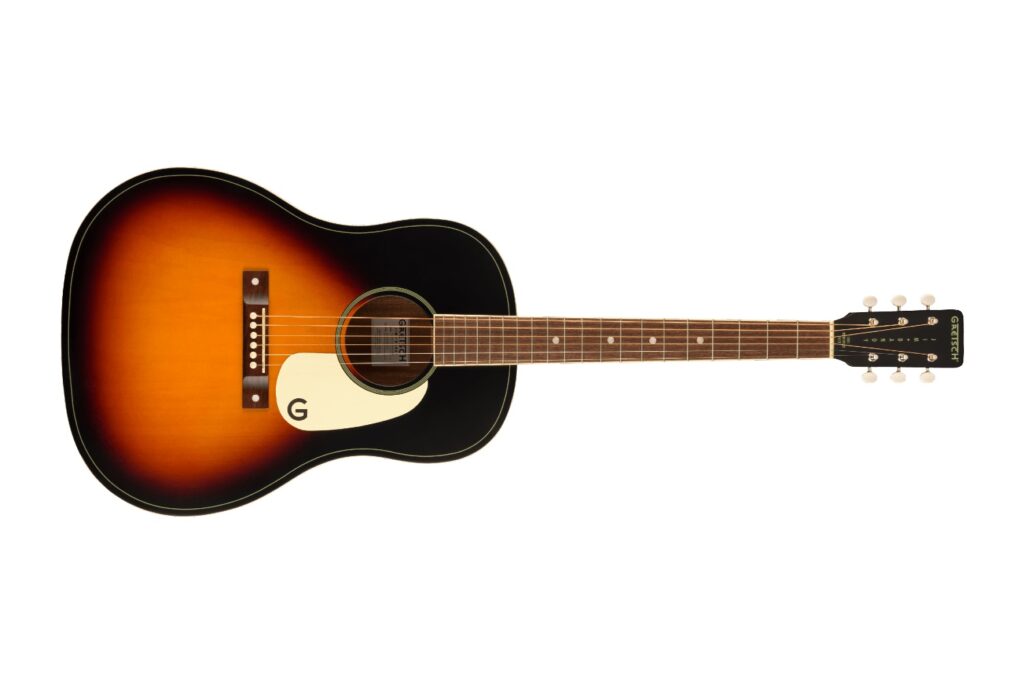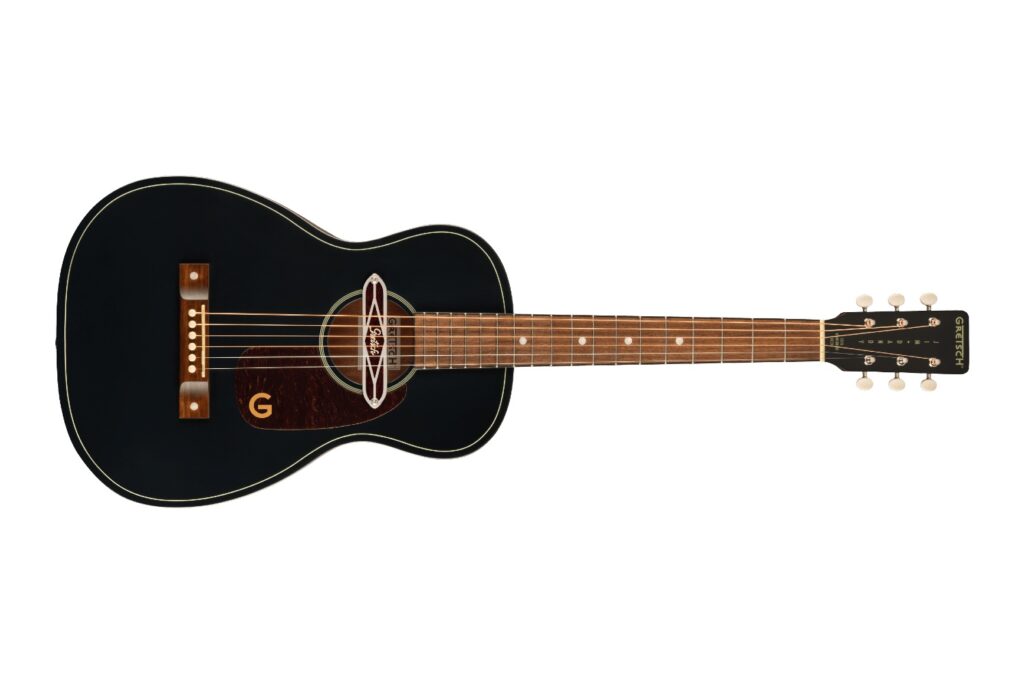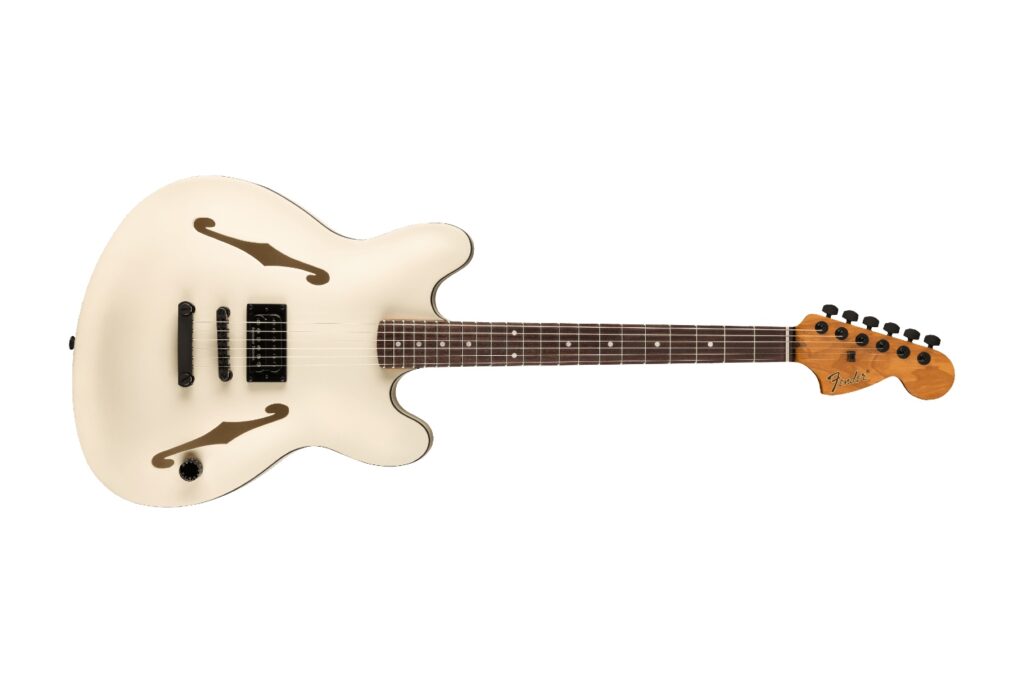Melbourne Instruments NINA | Melbourne Instruments | RRP: $5595
When it comes to Musical instrument manufacturing in Australia, suffice to say that only the strong survive. When you take into account the isolation, the various logistical challenges and the sheer cost of doing business in Australia, it’s easy to see why. It’s an underdog approach fuelled by passion and belief just to see a product from conception to fruition and this is why we see a small but fervent musical instrument industry here in Australia, one that consistently punches above its weight in terms of innovation, style and unique sonic character.
This tendency for high quality, boutique releases has seen many classic models over the years, emerge from Australia’s burgeoning musical instrument industry-a few big names within the realms of guitars, amps, pedals and drums have been plugging away reasonably comfortably for decades, but as for synthesizers, Australia hasn’t seen a commercially available designed and assembled synth since (drum roll please…) the CMI Fairlight – released in 1979.
Read more gear reviews here.
Some 40+ years on, there’s a new kid on the block, and I for one, was pretty bloody excited to see a company be gutsy enough to not only design from the ground up, but assemble a new synth here in Australia. This is a big deal! So I was naturally excited to take the new NINA through its paces.
Hailing from, believe it or not, Melbourne, the NINA is the impressive debut product from the brand. A 12-voice, motorised analogue poly synth and packed to the brim with features— it’s a remarkable introduction into the space. Aesthetically, the NINA has robust, Sontec-esque knobs and desktop keyboard style buttons to control different parameters for synthesis.
NINA has a total of 3 oscillators per voice, with two analogue VCOs which are fully discrete and have been designed in-house from the ground up, no generic off the shelf chips here. Morphable from triangle to sawtooth and PWM square wave there’s a wide palette to choose from, with sub octave mode for VCO 1 square wave as well as a hard sync for VCO 2 from VCO 1. The fine and coarse tune control has a wide range of 8 octaves and with it, refined tactile control. There’s also a digital wavetable oscillator on board, which is capable of users loading their own wavetables and has a resolution of 96kHz/24-bit. Selectable fuzz and noise generators ranging from white, pink Oscillator 1 or 2 XOR (fuzz) are also available and the LFO boasts selectable shape through zero modulatable rate and level control.
The VCF is a 4 pole transistor ladder low pass filter, with a nice, round Moog-like vibe, with a modulatable resonance available as a matrix destination and full envelope, with a completely separate envelope for the output. The circuit can be overdriven nicely; the drive is just awesome, harmonically rich yet smooth that can settle the sound in behind an arrangement or help it to poke through as a feature instrument. The VCA is rather unique in that there are two VCA’s per voice (a la stereo) and has the ability to infinitely pan via some clever stereo anti-phase wizardry, taking this outside the stereo field via the spin knob.
As for the on-board digital effects, Melbourne Instruments haven’t gone crazy with stuffing things to be brim, but rather have stuck with the classics of reverb, delay and chorus – but boy, do these effects stack up! They’re absolutely lush sounding, and personally, I wouldn’t want or need more than what’s here. The quality is just superb. The NINA’s focus is synthesis, and the road-worthy, black chassis is packed with processing to generate sound rather than detract from that to make room for effects.
Before I get to the most revered feature of this gorgeous synth, there’s a couple of really unique things I’d like to touch on. Firstly, the Morph knob, which allows seamless morphing between layers A and B of a chosen patch, allowing you to blend between two unique sounds to produce something never heard before! This makes for some really interesting sounds to be discovered, finding potential sweet spots between layers, or just getting downright weird and wonderful, at the twist of a knob! The other particularly noteworthy feature is the modulation matrix. This is pretty much endless in its ability to map anything anywhere, just being a button press away and intuitive as it gets to navigate.
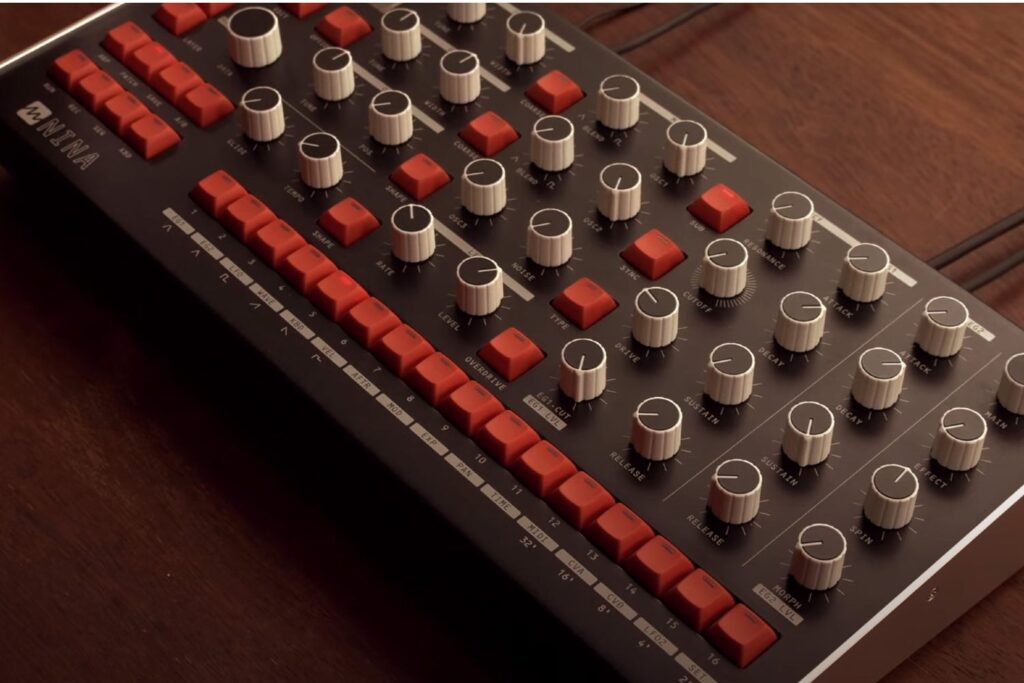
Now, what’s got most people really talking about this synth are the motorised encoders. Taken from drone technology, these moving knobs are absolutely no gimmick, so let’s just nip that in the bud. Rather, these encoders are built like tanks and are brushless, so they feel incredibly smooth, but you’re able to change the feel of them entirely if desired. For example, when changing the tuning of the oscillators from fine to coarse, the knobs go from smooth to stepped respectively.
Every part of this synth oozes character and vibe, whether it be the depth of the analogue guts which is phat and warm; wide and characterful, or the tactile convenience and darned right ease and simplicity of it’s layout, navigation through patches and storing new sounds, as well as the overall visual feedback of parameters on screen. The Melbourne Instruments NINA is an absolute dream to play and guarantees endless tinkering and sonic exploration, while also being robust and intuitive enough for quickly find a unique sound to record, compose or perform.
The unison mode is absolutely gargantuan; I don’t think I’ve heard a synth like it, just so incredibly massive! There’s so much grunt under the hood, but as I kept pushing this synth further into bedlam I got the distinct impression I was going to be the loser in this battle. NINA just doesn’t let up. As for the multi-timbrel side of things, NINA is a sound designer’s and composer’s dream. Endless sonic possibilities, and will pair seamlessly with other gear via its array of I/O. The NINA has a ¼” headphone out for silent playback, as well as a main, Stereo output and Aux out (that have no effects and are a fixed level). There’s one XLR input and three ⅕” inputs, all of which accept Control Voltage or Mic and Line level respectively. There’s MIDI in, out and thru for syncing and integrating the NINA into an existing array of equipment, and a DAW/USB-C out for connection to a computer, and two additional USB-A ports for connection to things like MIDI keyboards or thumb drives. The NINA is powered by a (supplied) 12V 8A adapter. The USB connection also allows for extra firmware updates for effects and other updates and improvements to functionality from Melbourne Instruments, making the NINA an evolving piece of kit as the technology grows. There’s already updates to firmware available for extra effects! The firmware update dated 19th June has extended effects features – up to 3 effects across 3 slots that allow you to either blend multiple effects in single slots (processed in parallel and mixed together) or set seperate effects to each slot for maximum control. The NINA is also now MPE (MIDI Polyphonic Expression) compatible – ready to use with Expressive E Ozmose, Roli, Braetoch and more, to adjust timbre and pitch while playing.

Every part of this synth, from the chassis to the encoders, buttons (and I had a feeling I was going to like the iconic red, desktop keyboard buttons – it gives a very nostalgic both in look and feel) and connectors, feels as it should – absolutely rock solid and build to last even the most demanding of performance environments, both live and studio alike. I was hard pressed to find anything I didn’t like about NINA, an absolute testament to the team at Melbourne Instruments and what they’ve achieved here. A piece of Australian history in the making, the NINA is a synth to get your hands on and Melbourne Instruments is a company to watch closely.
For more information, head to Melbourne Instruments.
